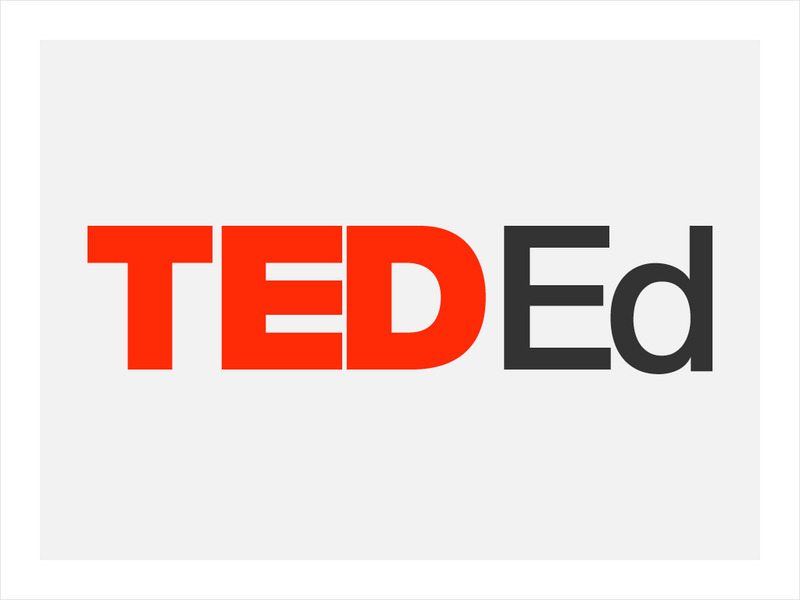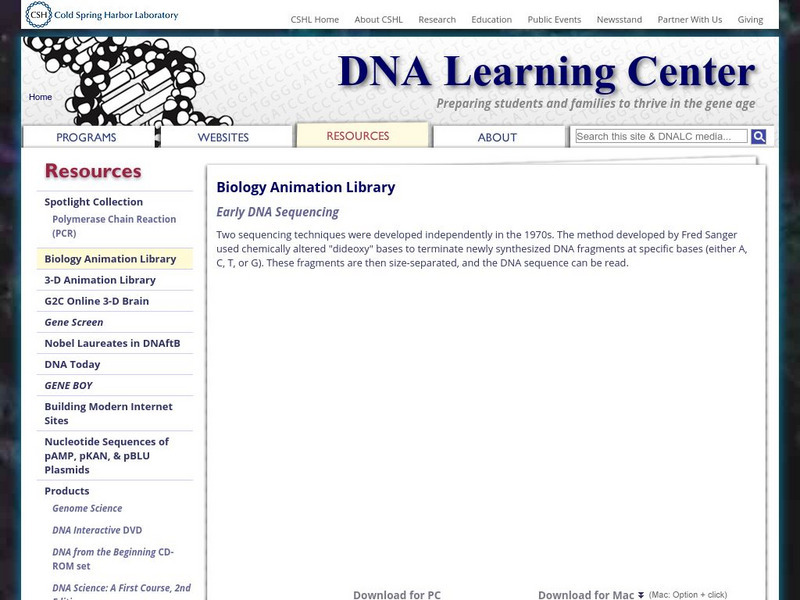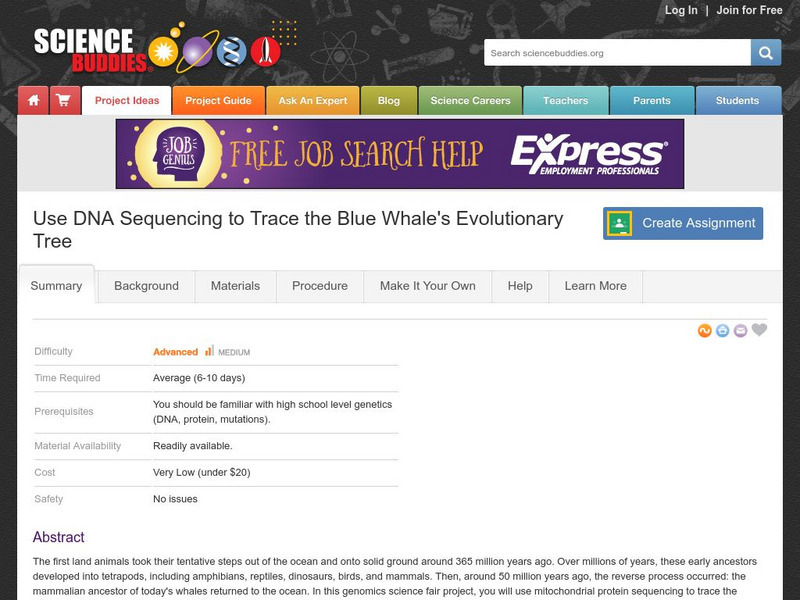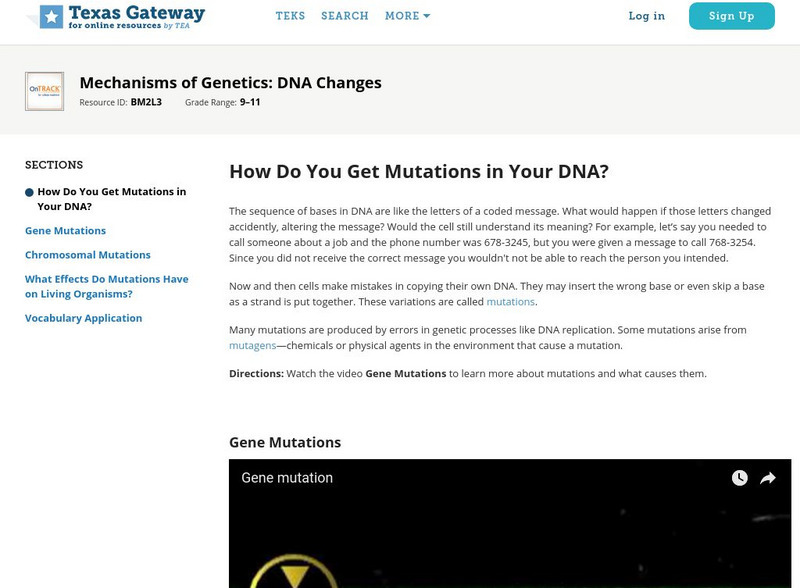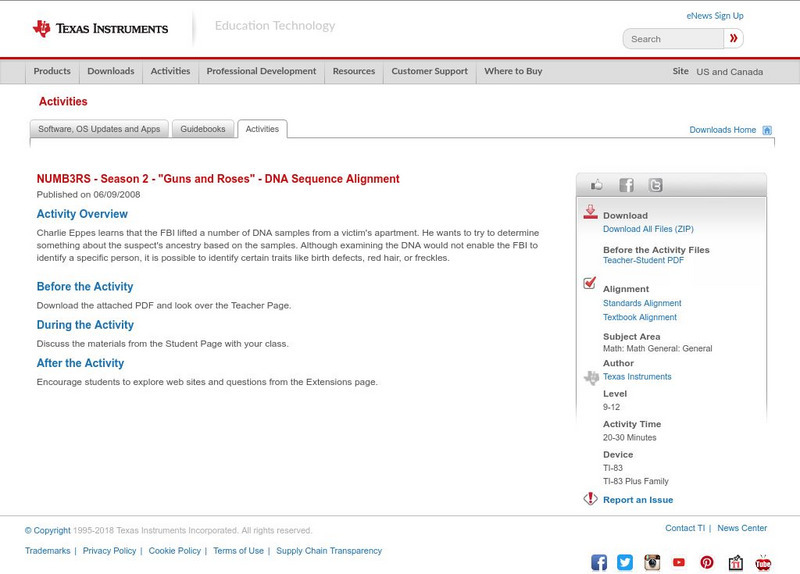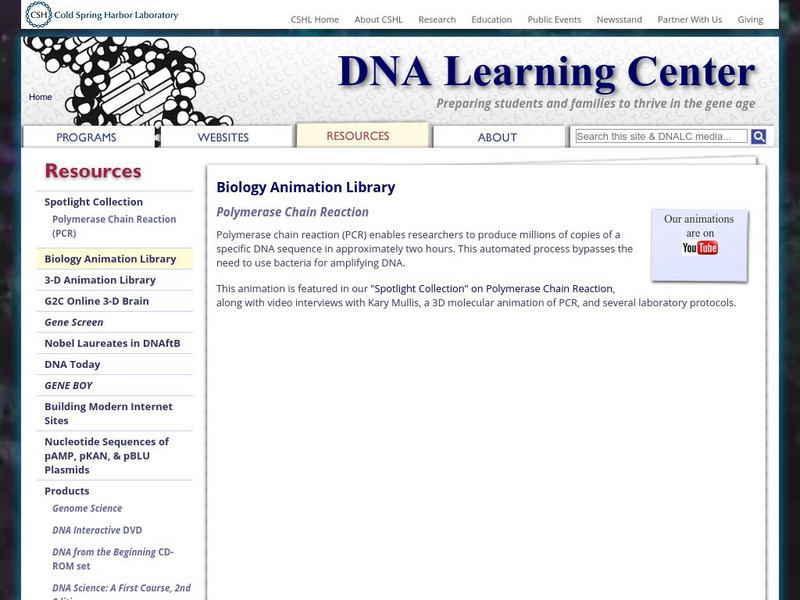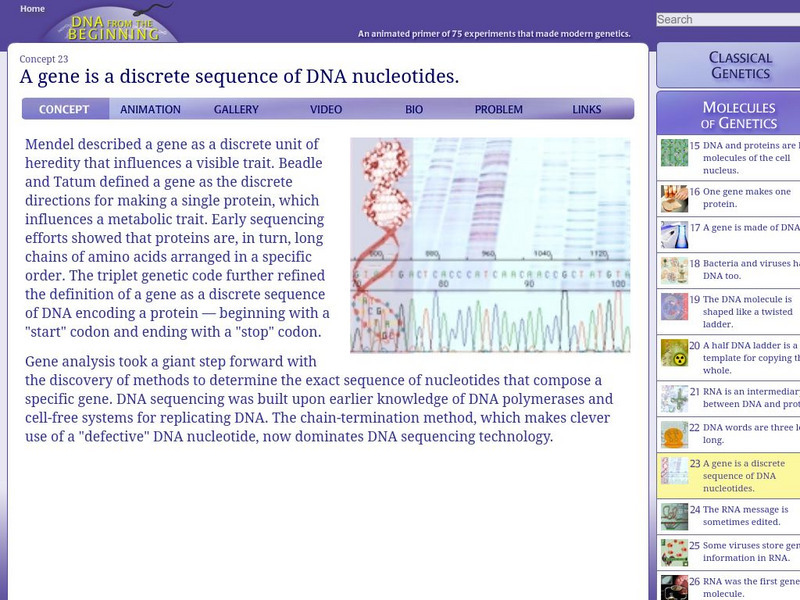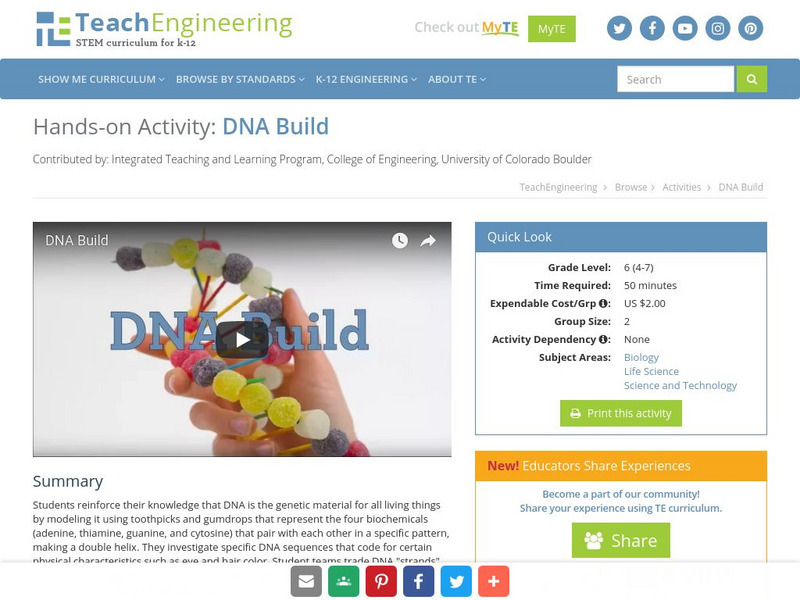Curated OER
CONSTRUCTION OF A HEMOGLOBIN GENE
High schoolers use research to see how eight pairs of triplets are equivalent to part of a gene and control a part of heredity. They also understand how red blood corpuscles manufacture normal hemoglobin.
Curated OER
The Genetic Basis of Neurological Disorders
Young scholars describe some aspects of known genetic defects on the human neurological condition. They participate in a variety of exercises including drawings, games, and analogies.
TED Talks
Ted: Ted Ed: How to Sequence the Human Genome
Your genome, every human's genome, consists of a unique DNA sequence of A's, T's, C's and G's that tell your cells how to operate. Thanks to technological advances, scientists are now able to know the sequence of letters that makes up an...
Cold Spring Harbor Laboratory
Dolan Dna Learning Center: Early Dna Sequencing
Through animation, Fred Sanger's DNA sequencing technique is explained.
Howard Hughes Medical Institute
Hhmi: Bio Interactive: Understanding Sequence Assembly
A series of lecture clips helps explain how DNA sequencing is done by using the analogy of shredding multiple copies of a book and then reassembling the text by finding overlapping fragments. The ultimate goal of DNA sequencing is to...
Khan Academy
Khan Academy: Dna Sequencing
Learn how the sequence of nucleotide bases (As, Ts, Cs, and Gs) in a piece of DNA is determined.
Genome British Columbia
Genome British Columbia: Sequencing
The structure of DNA is explained in detail, and the technology of DNA sequencing.
Science Buddies
Science Buddies: Use Dna Sequencing to Trace the Blue Whale's Evolutionary Tree
Around 50 million years ago, the mammalian ancestor of today's whales returned to the ocean. In this genomics science fair project, you will use mitochondrial protein sequencing to trace the evolution of whales and identify their closest...
Texas Education Agency
Texas Gateway: Mechanisms of Genetics: Dna Changes
Given illustrations or partial DNA sequences, students will identify changes in DNA and the significance of these changes.
National Health Museum
Access Excellence: Dna Sequencing (Dry Lab Activity)
This site is an advanced level hands-on activity to explain the Di-deoxy sequencing of DNA.
Other
Putting Dna to Work: The Dna Sequence
Get a feel for how to read a DNA sequence from several links located on this site.
Texas Instruments
Texas Instruments: Numb3 Rs: Dna Sequencing Alignment
Based off of the hit television show NUMB3RS, this lesson has student find the level of similarity between two different-length strands of DNA. Connections to Djikstra's algorithm are mentioned, and students learn more to follow careful...
Howard Hughes Medical Institute
Hhmi: Bio Interactive: Leading Edge Bioinformatics
Peter Skewes-Cox, and Dr. Graham Ruby, both in the DeRisi lab, explain state-of-the-art DNA sequencing and bioinformatic technologies. [6:36]
Cold Spring Harbor Laboratory
Dna Learning Center: Dna Barcoding
An animation introducing how scientists use the unique DNA sequence called DNA barcode to identify each species of living thing. Understand the process used and the type of answers DNA barcoding can give us.
PBS
Pbs Learning Media: Forensics and Dna Profiling
Find out how DNA profilers analyze bits of tissue to identify human remains. From the NOVA: "Lost on Everest" Web site.
Cold Spring Harbor Laboratory
Dolan Dna Learning Center: Polymerase Chain Reaction
See how a polymerase chain reaction can produce millions of copies of a specific DNA sequence in a short period of time.
Cold Spring Harbor Laboratory
Dna From the Beginning: A Gene Is a Sequence of Nucleotides
Genes are actually a specific sequence of DNA and they have a clear start and stop. Learn about the discovery and sequencing of genes at this site. This multimedia article includes animations, pictures, video, biographical information,...
Nature Research
Scitable: Genomics
Get an in-depth look at the genome which includes all genes, regulatory sequences, and other information found in noncoding regions of DNA. Articles on webpage explores the large amount of information available about genes and DNA...
Science Buddies
Science Buddies: Extracting Onion Dna
In this project, you'll learn how to isolate DNA from onion cells, separating it from other cellular components in a manner that still preserves its structure and sequence. In the end, you'll have enough DNA to see with the unaided eye,...
University of Missouri
University of Missouri: Biotech Adventure: Dna Structure
DNA Helix, DNA structure, DNA bases, Nucleotides, strands of DNA, Bonding in DNA, and bonding between bases are the topics delved into in this thorough site.
Genome British Columbia
Genome British Columbia: Dna Code Bracelet
For this activity, students create a bracelet of beads using DNA code. Each letter represents an amino acid and is three beads. The authors suggest that even younger students would enjoy this activity, although older students will...
TeachEngineering
Teach Engineering: Dna Build
Students reinforce their knowledge that DNA is the genetic material for all living things by modeling it using toothpicks and gumdrops that represent the four biochemicals (adenine, thiamine, guanine, and cytosine) that pair with each...
National Health Museum
Access Excellence: Dna Dry Lab
This lab illustrates how the order of nucleotides in DNA determines the order of amino acids in proteins. Relates DNA function to that of RNAand provides an exercise to demonstrate how mutations may occur. Includes a lesson plan and...
Cold Spring Harbor Laboratory
Dna Learning Center: Dna Molecule, Dna Unzip
The DNA double helix contains two sequences of nucleotide code letters than run along the molecule. Untwist the spiral and DNA can be seen as two parallel strands. That's why its sometimes called the double helix. Unzip the strands and...




